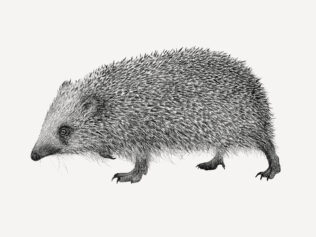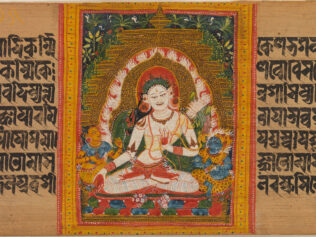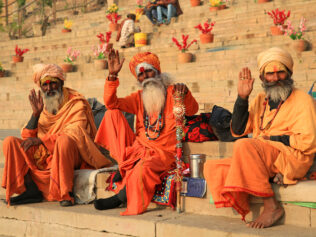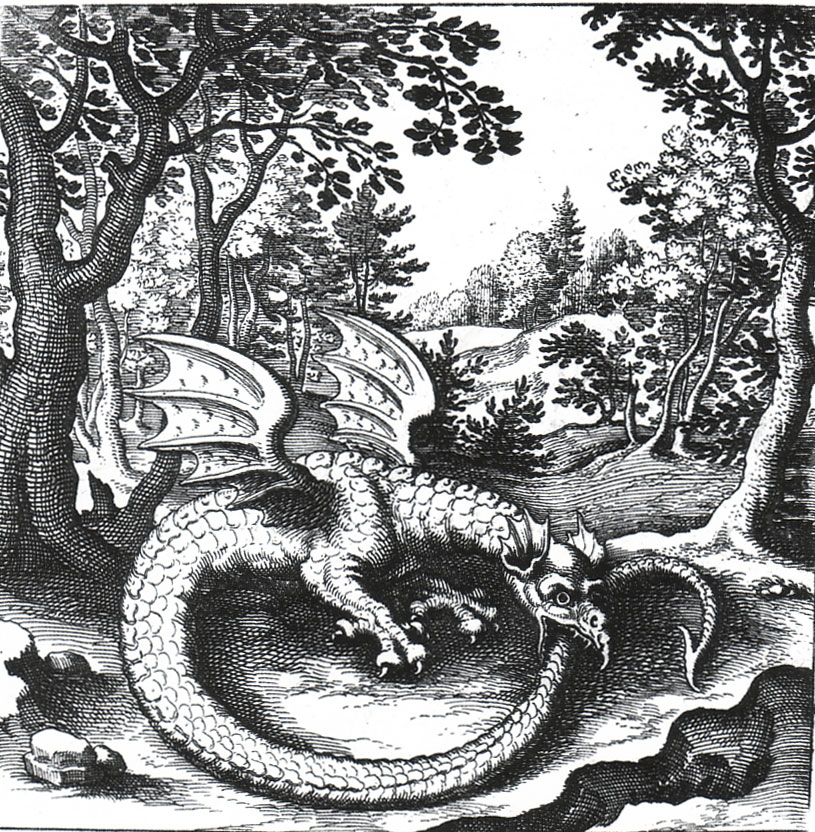
If you, dear Reader, are to end up in any one of the Asian hell realms, we highly recommend the Buddhist Hell, as it offers the best cost-to-benefit ratio.
A nearly infinite number of worlds in a nearly infinite space inhabited by an infinite number of beings – that’s how you could briefly define Buddhist cosmology. Although there were monks who would provide precise calculations as to the number or the size of these worlds, these figures are astronomical and abstract to the point that they are basically useless.
On the highest levels of being, we have ‘shapeless’ lands, lands of ‘pure form’ and lands of beings immersed in meditation; only further down do we find the worlds of gods, jealous gods, people, animals and creatures possessed by lust. Situated at the lowest level are the hell realms.
The Buddhist hell is not a place of eternal suffering. This is not only because, as everything in Buddhism, it is passing and temporary, but also because the being that ends up there is reborn in a different reality once punishment has been served. In terms of its function, this type of hell brings to mind the Western purgatory.
Indian writings speak of eight “hot” hells and eight “cold” hells (here, torture is associated with cold). The names of each of these hells also describe what goes on there: Samghata (‘crushing’), Raurava (‘screaming’), Tapana (‘heating’), etc. Situated closest to our surface is Samjiva (‘rebirth’). Sinners die in horrific conditions there; then they are reborn by the power of the wind, which stirs their remains. For a brief moment, they enjoy life, but then they die again in anguish; this brief moment of delight explains why the Samjiva is located so close to the surface. Things aren’t as luxurious as you go deeper, though.
In addition, each of the eight hells has four gates that lead to the satellite hells (there are a total of 128 satellite hells). Monks distinguished four types of satellite hells. Let’s recall the interesting case of the Kshuramarga: a sinner is thrown into a forest of blades, the wind throws the blades onto the sinner; the blades cut off the sinner’s members, which are caught and eaten by spotted dogs.
With time, new visions appeared. In addition to the eight hot hells and eight cold hells, the location of which was roughly determined in relation to the mythical Meru mountain, new ones were added that existed independently, and the existence of which was required by sins insufficiently considered by ancient authors.
We can find one of these images in a work from the 10th century entitled Ōjōyōshū (Essentials of Birth in the Pure Land), written by the Japanese monk Genshin. He describes a hell intended for voluptuaries and debauchees. A being who is reborn here ends up in a forest in which trees have blades instead of leaves and branches. On the top of such a tree, one can see the face of an alluring girl sensually blinking her eyes. The sinner, inflamed by such a sight, starts to climb the tree and is brutally lacerated. When he makes it to the top, he can’t find the girl. He sees her down on the ground, saying: “I just couldn’t wait any longer for you, so I came down.” In his amorous infatuation, the debauchee starts to go back down, injuring himself and cutting off his members. Back on the ground, he finds out that the impatient girl has climbed back up to the top. This dramatic chase is repeated again and again for a period of 10 eons, according to detailed calculations.
The idea of hell understood as a realm of punishment was unknown in China before the appearance of Buddhism. Yet once the idea blossomed, it vigorously began to grow. However, in contrast to other traditions, only ‘cold’ hells were discussed there.
Inspirations for Chinese thinkers flowed not only from Indian texts, but also from prison torture. The exact number of hell realms has not been explicitly determined. What is known, though, is that working on each of the infernal levels is an honest clerk responsible for the righteous judgment of the souls.
A manuscript from the 5th century entitled Jieye benxing jing (Scripture of Controlling Karma and Original Conduct) specifies 10 possible infernal punishments. They include what are usually typical infernal penalties: blades cutting the skin, trees with sword blades, swallowing of glowing coals, etc. Yet one type of punishment is especially worth noting here, which is a type of expansion on what a sinner can expect in Sanjiva: rebirth, followed by shackling, persecution and suffering, until the sinner is finally… murdered.
One of the Chinese names for hell is Diyu (‘earth prison’). At the end of their stay there, a being passes on to a certain dark room where they looks for the next incarnation, an earthly incarnation this time around. Then they drinks a special liquid that erases any memories of their experiences in Diyu. An interesting fact is that around the end of the 16th and beginning of the 17th century, there lived a certain Governor Guo who had discovered the entryway to Diyu in a Szechuan mountain. He managed to visit the place and leave without drinking the said liquid. He described in detail what he had seen. But he didn’t write it on paper; he carved the story of his journey in indestructible rock.
Does this cursory overview of the geography of Eastern hell realms and infernal tortures allows us to derive any similarities with Western traditions? Perhaps the main similarity is in the fact that infernal depictions are much more creative and developed than those concerning heavenly pleasures.
Translated from the Polish by Mark Ordon









